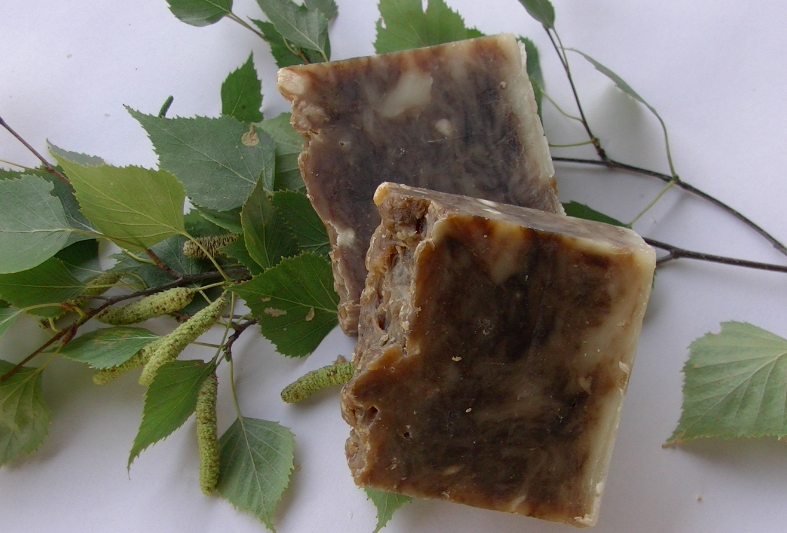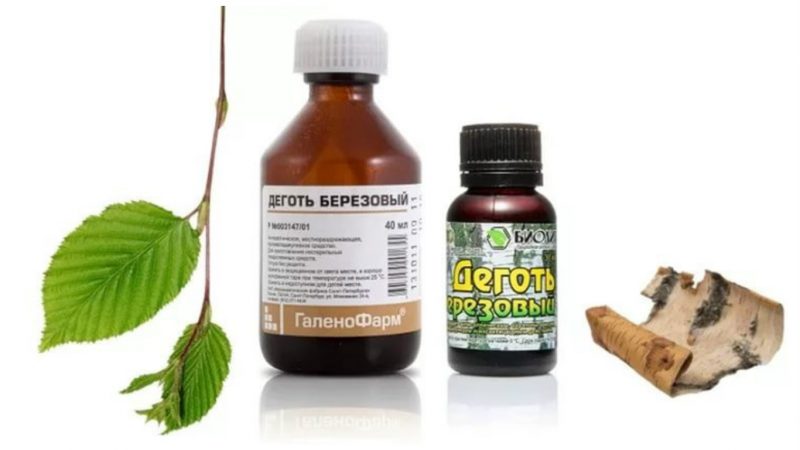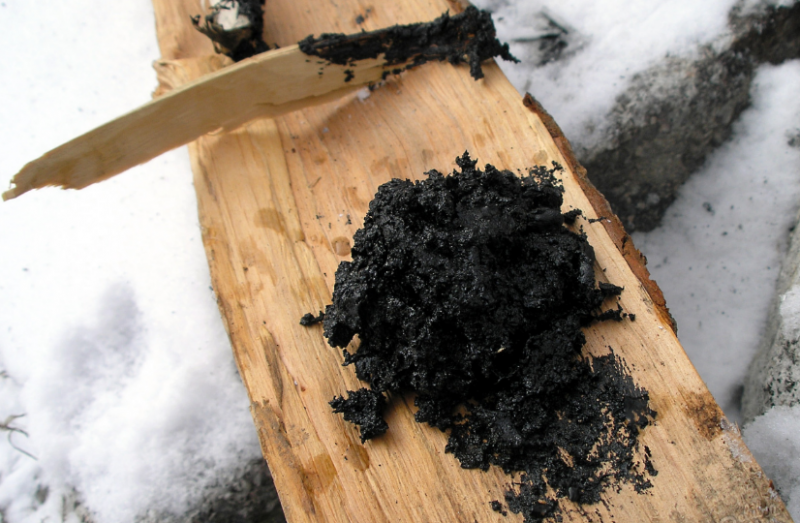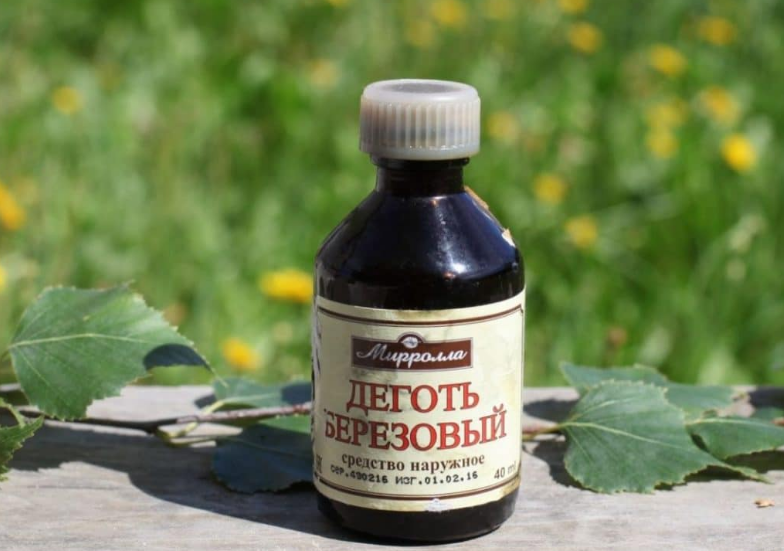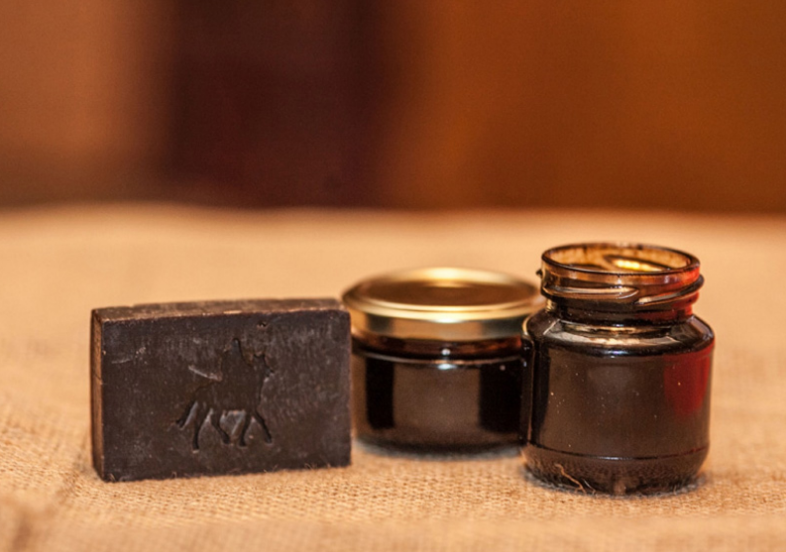Tar is obtained from birch wood tar. It has a wide range of applications - veterinary medicine, cosmetics, traditional medicine and gardening. In this article, you will learn about the use of birch tar in the garden.
Material Content:
The composition and properties of folk remedies
Tar is famous for these substances in its composition:
- phenol;
- toluene;
- xylene;
- terebene;
- betuloside;
- gaulerinum;
- guaiacol;
- betulin;
- xylene;
- tannins (up to 15%);
- alkaloids;
- leukoanthocyanins;
- essential oils;
- near catechins.
This product contains a small amount of carcinogens.
The benefits of folk remedies based on birch tar have been known for a long time.
- Phenolic substances endow it with antiseptic and antimicrobial properties that prevent suppuration and help wounds heal faster. Injured areas begin to regenerate rapidly, tissues receive nutrients, and blood circulation normalizes.
- In addition, tar treats skin diseases: lichen, scabies, seborrhea, psoriasis, eczema, rash and neurodermatitis. This is an excellent tool for the manifestation of an allergic reaction (relieves diathesis itching).
- Tar is common in folk medicine in the treatment of fungal diseases. And even experts note the effectiveness of tar soap and shampoos.
- It is also a powerful anti-parasite. No worse than pumpkin seeds will help to remove worms from the body.
- It is successfully used for problems of the respiratory system. Recommended for bronchitis, asthma, tuberculosis, cough and colds.
- It is used to treat hemorrhoids, mastopathy and joint diseases.
Many medicinal and cosmetic preparations contain tar, for example, the well-known Vishnevsky ointment.
Application in the garden
The insecticidal and repellent properties of birch tar can kill parasites and scare away annoying insects on land.
Using mixtures with tar you will forget about the problem of occurrence:
- Maybug larvae;
- all types of aphids;
- Colorado potato beetle;
- onion; cabbage and carrot flies;
- ants;
- moles and a bear;
- spider mite;
- fruit and vegetable tracks;
- slugs;
- mosquitoes;
- hares and mice.
Ways to use against pests
There is a fairly simple, but effective way to use tar to protect trees, shrubs and tops from uninvited guests - you need to spray the seedlings before and after flowering. A mixture of birch tar with tar soap helps against insects even when they have already appeared on the site.
Here's what you need to do:
- Heat 50 grams of tar soap (1/2 piece) and dissolve in an ordinary bucket of water.
- Then pour in tar (6 tbsp. L.).
- Mix the solution well and pour into a spray bottle.
- Spray seedlings and adult plants. It is worth paying special attention to inflorescences, the back surface of the leaves, young shoots and the trunk.
The method of combating aphids and ants on trees. A solution is prepared (tar + ash in a ratio of 1: 1) and applied to the stem trunks. This will scare away the pests and become a way to prevent the spread of viruses and infections.
Another option is a belt around the trunk. It is necessary to saturate a piece of fabric (sufficiently absorbed natural material) with birch tar and wrap the tree several times. Do it better in the early spring.
A specific smell and repellent substances will be released throughout the garden season.
Soil mulching is effective for protecting plants from pests. Trunk circles and rows between berry crops must be processed as follows: take sawdust and moisten them well with birch tar, compress and pour hot water so that they swell.
- Moles and bears will leave their favorite place if small pegs greased with birch tar are placed in the places of their appearance.
- In order to drive the hares, it is necessary in the late autumn to cover the stem boles with tar. The same procedure can be done in the winter, if there are no large snowdrifts on the site.
- Colorado beetles are famous dirty tricks. From them, too, birch tar can help. Once every 3 days you need to spray young potato sprouts. Do not use a sprayer, as it will clog quickly, it is better to take a regular broom. It needs to be dipped in tar and carefully treated young bushes. Periodically, the drug must be mixed so that it does not exfoliate. This method is not dangerous for animals and humans. Beetles will leave the potato zone, but new ones will not appear.
How to use against rats and mice
Birch tar is a good remedy for rats and mice. Pick up a few piles of oats, corn or wheat and soak them in tar. Grains should be carefully coated with an oil preparation. Put ready baits in places where rodents have visited. If you ceased to notice pests, then do not immediately throw away the grain. Let it lie for a while. When the heaps remain intact for a long time, then you can be sure that the rodents are gone.
Advantages and disadvantages
Compared with the use of pesticides in the garden, birch tar has many advantages.
- This natural remedy is safe for people.
- Helps to get rid of many different pests.
- Easy to use independently, does not need to use special equipment. Important! Always read the instructions for use of birch tar.
- No addictive effect in insects.
- Long-term protection (from a month to the full growing season).
- It does not accumulate in plants in large doses.
- It does not destroy pests, but drives them out of the garden.
- Various applications (for example, without contact with the plant).
Despite the obvious advantages of birch tar, it also has disadvantages:
- The specific smell may not like the neighbors and the owners of the site.
- Together with pests, it can scare away beneficial insects.
- Contact with the fruit and edible greens may cast doubt on the use of the crop for food.
- It is not recommended for use indoors (for example, on indoor plants), since it is problematic to kill the pungent odor.
- Work with concentrated tar must be careful, observing the rules of interaction with substances of the 3rd hazard class.
- Solutions with tar are difficult to mix with other compounds. So that the mixture does not begin to exfoliate, it must be periodically stirred and used in the first few hours after preparation.
- It does not come off if it gets on clothes. The metal elements of the sprayer can only be cleaned with organic solvents.
Read also:raspberry pruning
Precautionary measures
Tar from birch must be kept out of the reach of children and animals. It is forbidden to store it in the same place as biological products for the site.
Work with tar solutions must be in a respirator. The smell of tar is very pungent, it can cause coughing or redness of the eyes.
It is important to prepare some vodka or alcohol. They are needed in cases where tar gets on the skin. It is necessary to soak a cotton swab with prepared alcohol and immediately erase the odorous preparation. After, the affected area should be washed with soap and water. Dry skin may retain redness for some time after exposure to irritants.


